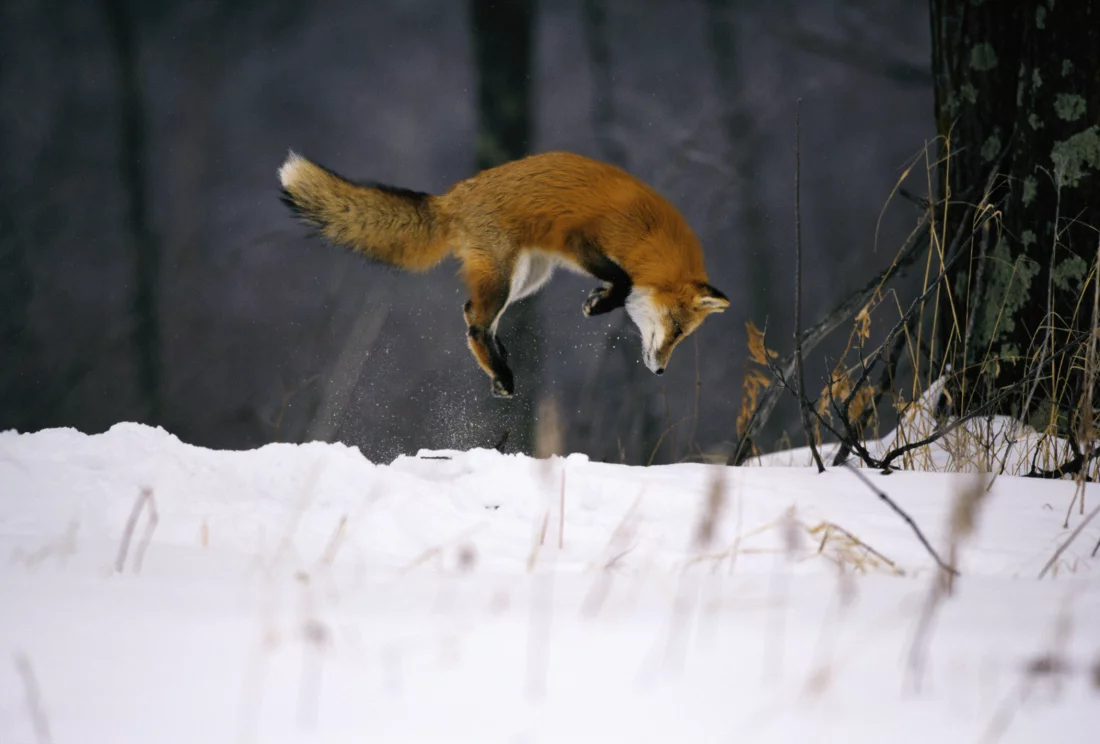Foxes’ Snow-Diving Skills Get Scientific Spotlight
Winter may be a time for cozy fires and hot drinks, but for Cornell University scientists, it’s also an opportunity to explore how foxes masterfully dive into snow. Their research, which examined the unique biomechanics of foxes’ snouts, revealed why these animals excel at hunting beneath snowy surfaces.
Both Arctic and red foxes use their acute hearing to pinpoint the location of rodents burrowing under the snow. Then, with a dramatic leap, they dive headfirst, often plunging so deeply that only their tails remain visible. This “mousing” technique has long fascinated wildlife observers, but Cornell researcher Sunghwan Jung and his team wanted to understand how foxes avoid injury while penetrating the snow so efficiently.
The Science of Snow and Snouts
Jung’s research highlighted the dual nature of snow, which behaves as both a solid and a fluid. Snow can compact into shapes like snowballs or flow around an object, depending on how it is disturbed. For foxes, the ability to shear through snow as if it were a fluid is key to their success.
To investigate, the team used 3D-printed replicas of fox skulls and compared them to those of other animals, like bobcats, with flatter faces. When dropped into snow at speeds of 2–4 meters per second (about 8 mph), the fox skulls experienced lower impact forces thanks to their long, pointed snouts.
“Their sharp snouts allow them to shear the snow, enabling deeper penetration,” says Jung. This efficiency makes snow diving not only effective but also safe for the foxes’ delicate faces.
Intrigue Among Scientists
The findings piqued the interest of other researchers, who began exploring additional factors like the rotation of the skull during a dive and the role of leg and jaw movements. Comparative anatomist Rachel Roston remarked on how unusual it is for mammal skulls to serve purposes beyond housing sensory organs.
“It’s fascinating to think about the skull being used this way,” Roston says. She adds that snow presents a unique biomechanical challenge, different from burrowing in soil or swimming through water.
A New Perspective on Fox Behavior
This research sheds light on how foxes adapt to their environment in ways previously overlooked. While their precision hunting in the snow has always been impressive to wildlife photographers like Deby Dixon, understanding the science behind it adds a new layer of appreciation.
Future studies may delve deeper into the mechanics of fox snow diving, potentially revealing even more about how these clever predators thrive in their wintry habitats.
